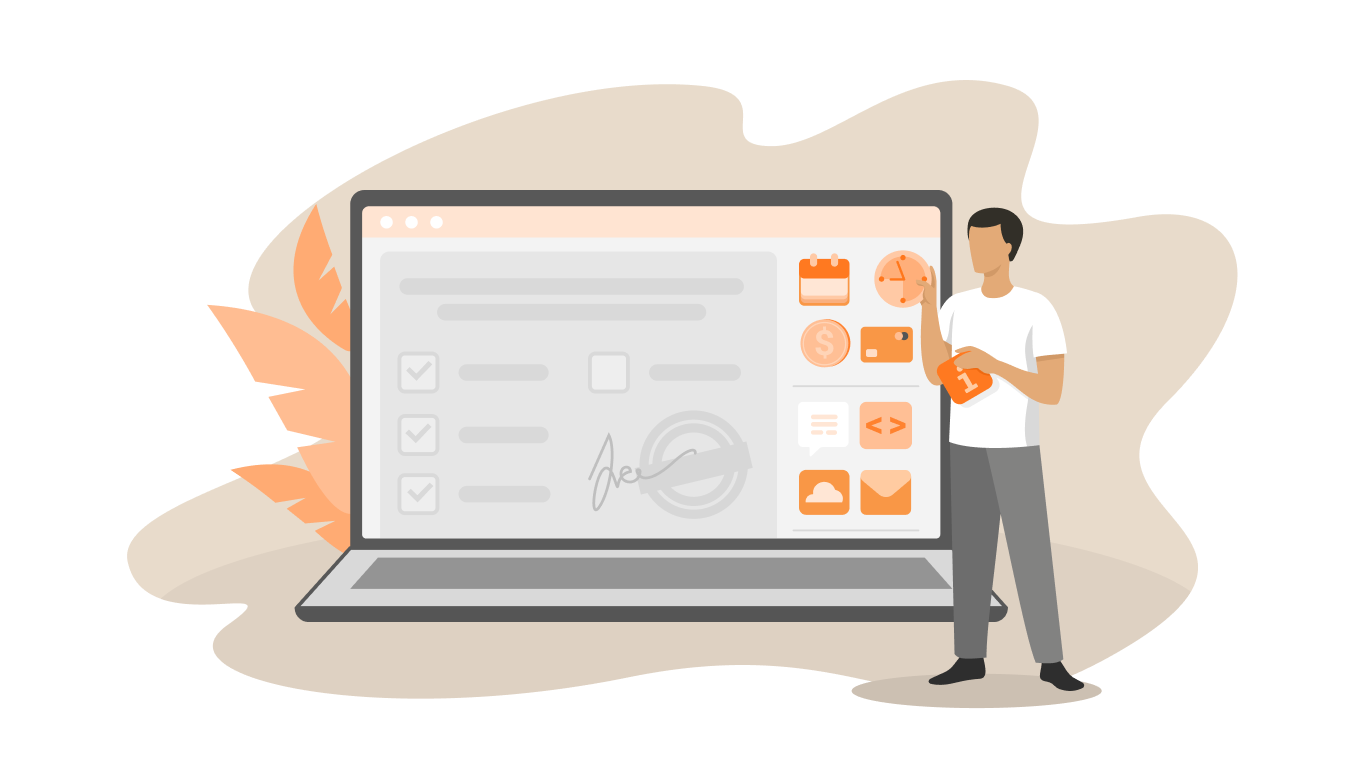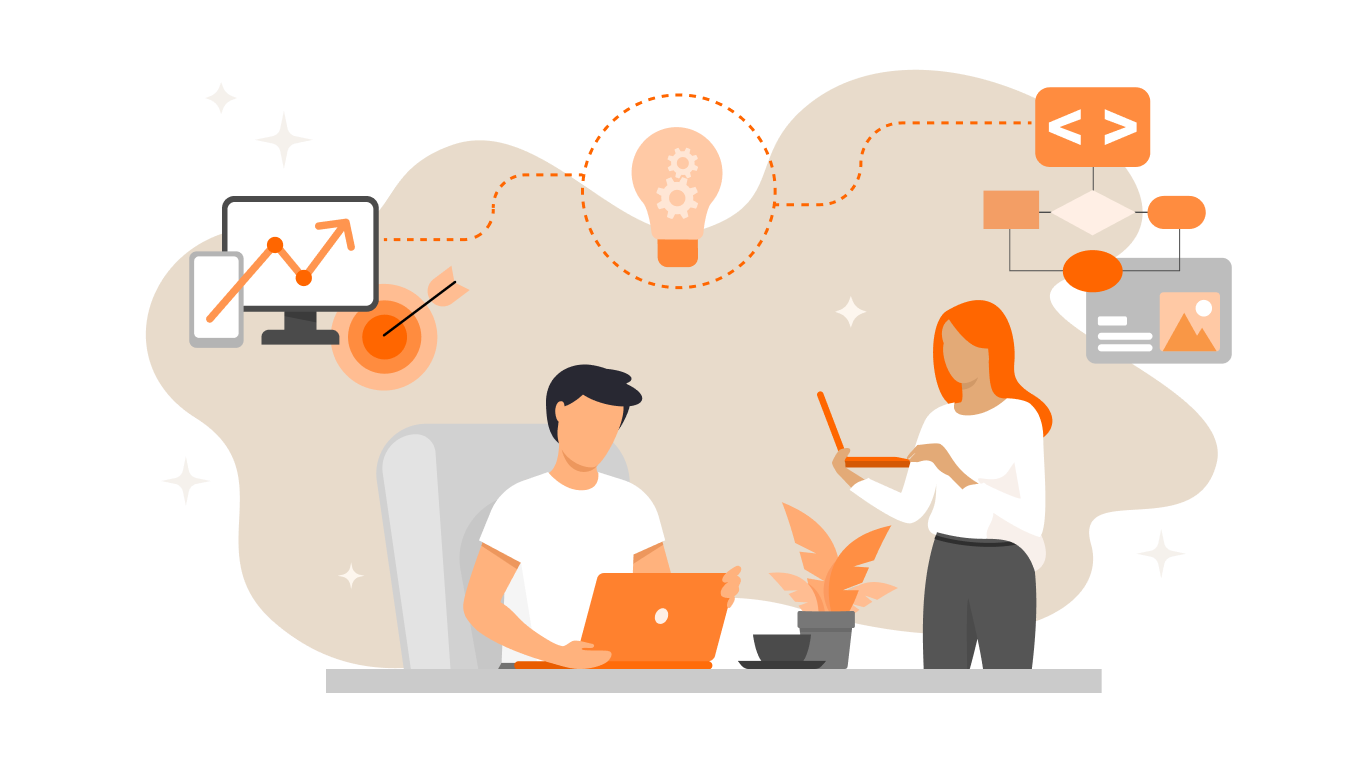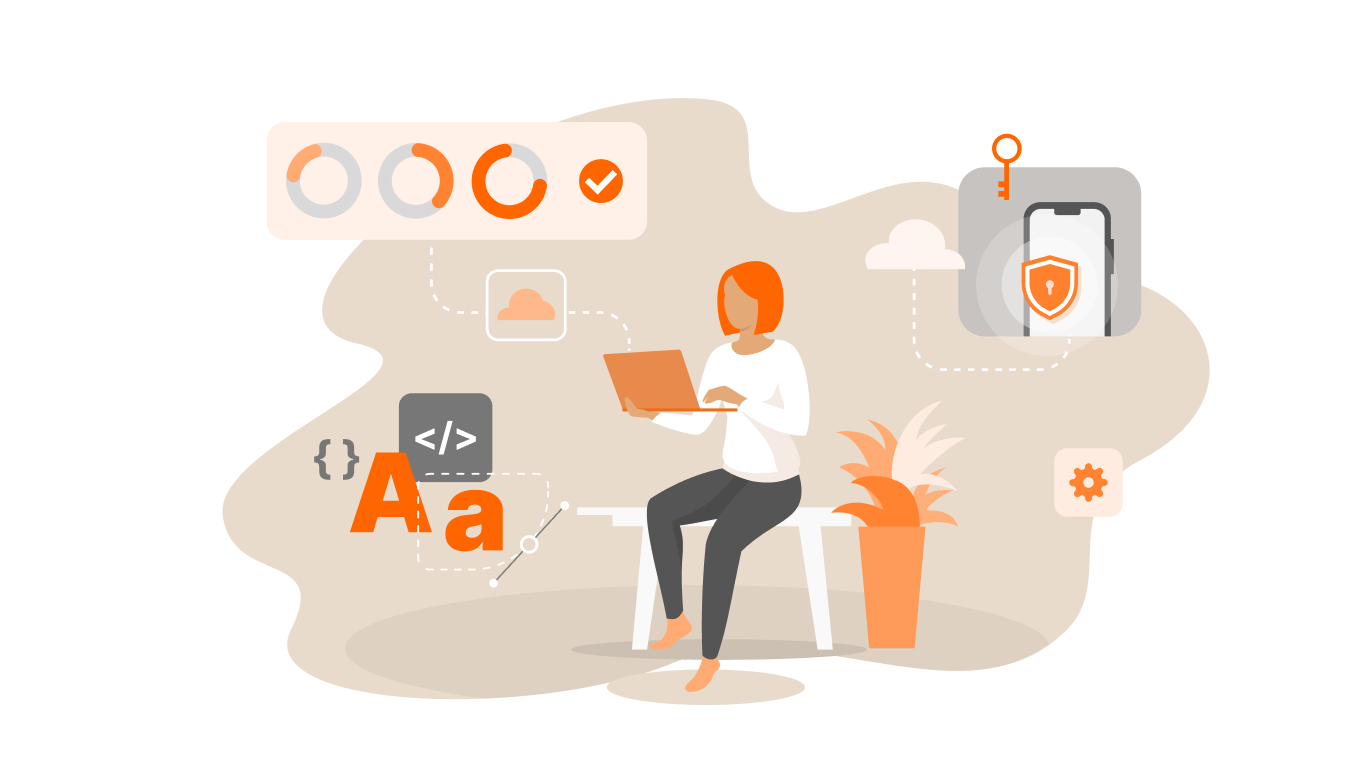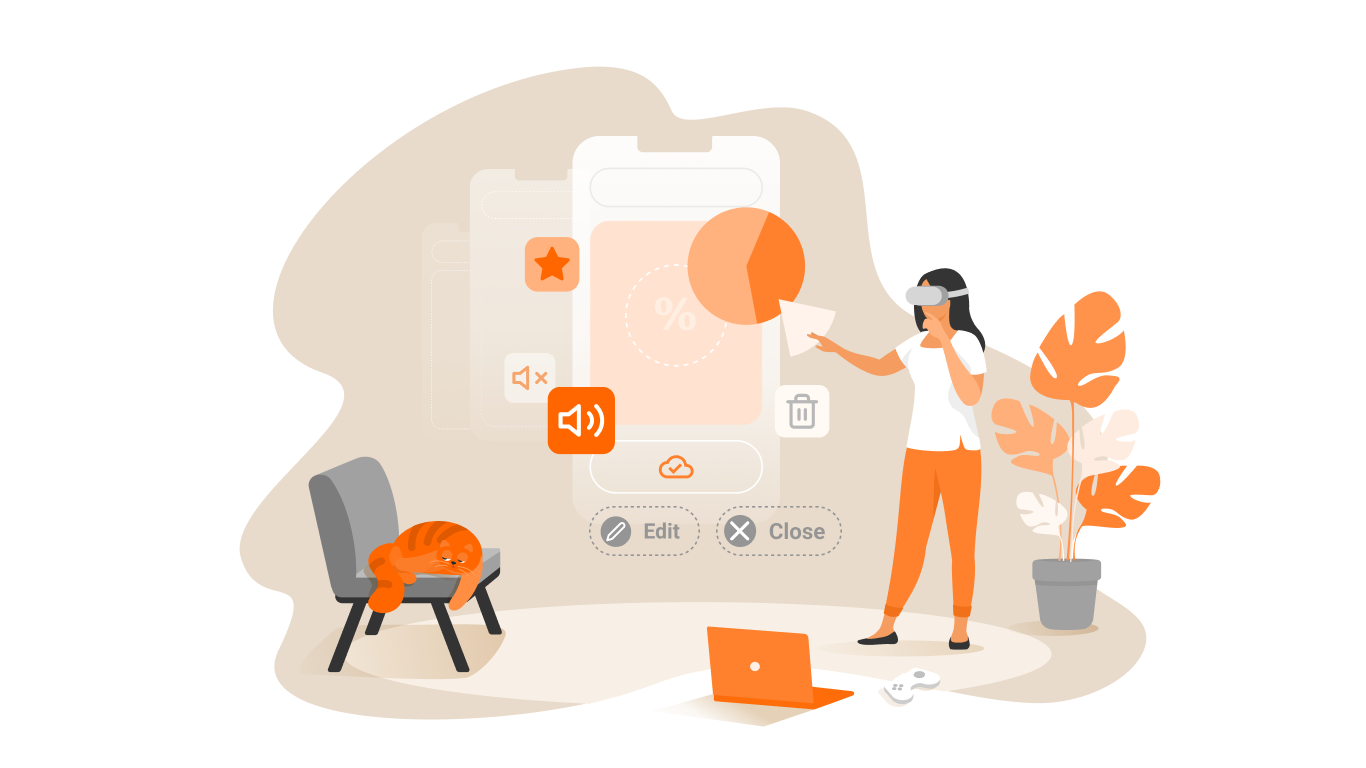Face Recognition Technology

You go up the stairs and enter the elevator. It knows what floor you need. The doors to the apartment open to you. The computer and the phone “recognize” you and do not require a password. Cars, social networks, shops – all greet you, barely seeing you, refer to you by name and foresee your every step. This is how face recognition works. Like? Or frightened?
At first, it may seem that any organization that can afford to use the face recognition system, follows your every step, collects a dossier on you. But you can not even imagine how widely face detection technologies have spread around the world and what powerful prospects promise. In addition to the above examples, face recognition systems allow you to do such simple and complex things:
- confirmation of a student’s personality during online exams;
- identification of people from the “black list” at the entrance to the stadiums and nightclubs;
- payment for goods;
- keeping your place in the queue when visiting an amusement park;
- unlock your phone or computer.
About what to say, if in all major cities there is a wide network of thousands of outdoor video cameras. You can not hide from them anywhere, and this makes people think about shadowing, but its scale is not so great. The network uses a powerful face recognition system, but its operation requires a lot of energy, so in real time only 2-4 thousand cameras work. Mass tracking the population while only frightening, it is worth to focus on the real benefits of this technology work. But first things first.
How Does The Face Recognition System Work?
Never thought about how you recognize a person’s face? And how does the computer do this? Of course, human faces have certain properties that are easy to describe. The distance between the eyes, the position and width of the nose, the shape of the superciliary arches and the chin – all these details you notice unconsciously when you look at the other person. The computer does all this with a certain efficiency and accuracy, because, combining all these metrics, gets the mathematical formula of the human face.
So, how well does the face recognition system work now? It is quite good, but sometimes it makes mistakes. If you’ve ever encountered software that recognizes faces on Facebook or on another platform, you’ve probably noticed that there are as many funny results as accurate ones. And yet, although the technology does not work with 100% accuracy, it is good enough to find wide application. And even make you nervous.
Paul Howie, NEC Australia’s general manager, says that their face detection system scans faces for individual identifiers:
“For example, many consider the distance between the eyes a unique characteristic. Or it can be the distance from the chin to the forehead and other components. In particular, we take into account 15-20 factors that are considered important, as well as other factors that are no longer so significant. A three-dimensional image of the human head is created, so even if it is partially closed, we can still get an exact match. Then the system takes the signature of the person and passes it through the database. ”
Should I Worry About The Programs That Recognize Faces?
First of all, face recognition is data. Data can be collected and stored, often without permission. Once information is collected and stored, it is also open to hacking. Platforms with software that recognizes faces have not been seriously compromised, but as technology is spreading, your biometric data is in the hands of a growing number of people.
There are also issues of ownership. Most people do not know that when they register in social media platforms like Facebook, from now on their data belongs to Facebook. Since the number of companies using face recognition is constantly growing, very soon you will not even have to upload your own photos to the Internet in order to be compromised. They are already stored there, and stored for a long time.
Speaking of software, they all work in different ways, but basically they use similar methods and neural networks. Each person has many distinctive features (it is impossible to find two identical faces in the world). For example, the FaceIt software defines these attributes as node points. Each face contains approximately 80 nodal points, similar to those we mentioned before: the distance between the eyes, the width of the nose, the depth of the eye cavities, the shape of the chin, the length of the jaw. These points are measured and create a numeric code – “face print” – which then falls into the database.
In the past, face recognition relied on two-dimensional images to compare or identify other two-dimensional images from the database. For greater efficiency and accuracy, the image should have been a person looking directly at the camera, with a small dispersion of light and without a special facial expression. Of course, it worked damned badly.
In most cases, images were not created in a suitable environment. Even a small play of light could reduce the efficiency of the system, which led to high failure rates.
3D-recognition has replaced 2D. This newly emerging trend in software uses a 3D model that provides high accuracy of face recognition. Imprinting a three-dimensional image of the surface of a person’s face in real time, the software highlights the distinctive features – where hard tissues and bone are produced most, for example, curves of the eye socket, nose and chin – to identify the subject. These areas are unique and do not change with time.
Using the depth and the axis of measurement, which is not affected by the lighting, the 3D face recognition system can even be used in the dark and recognize objects from different angles (even in profile). Such software passes through several stages, identifying a person:
Detection: taking a picture by digitally scanning an existing photo (2D) or video to get a live subject image (3D).
Centering: having determined the face, the system marks the position of the head, size and posture.
Measurement: the system measures the curves on the face to within a millimeter and creates a template.
Representation: the system renderes the template into a unique code. This code sets each pattern a set of numbers representing features and facial features.
Comparison: if a snapshot in 3D and the database contains three-dimensional images, the mapping will take place without any changes to the snapshot. But if the database consists of two-dimensional images, the three-dimensional image is decomposed into different components (as if two-dimensional images of the same facial features taken from different angles), and they are converted into 2D images. And then there is a match in the database.
Verification or identification: in the verification process, the snapshot is compared to only one snapshot in the database (1:1). If the goal is identification, the snapshot is compared with all the snapshots in the database, which leads to a number of possible matches (1:N). Apply this or that other method as needed.
Where Are The Face Recognition Systems Used?
In the past, face recognition systems have found application primarily in the field of law enforcement, as bodies used them to search for random persons in the crowd. Some government agencies also used such systems for security and to eliminate fraud in elections.
However, there are many other situations where such software becomes popular. Systems are becoming cheaper, their distribution is growing. Now they are compatible with cameras and computers that are used by banks and airports. Travel agencies are working on a “seasoned traveler” program: with its help they conduct a rapid safety screening for passengers who voluntarily provide information. Queues at airports will move faster if people go through a face recognition system that matches people to an internal database.
Other potential applications include ATMs and cash withdrawal terminals. The software can quickly check the customer’s face. After the client’s permission, the ATM or terminal takes a snapshot of the person. The software creates a face imprint that protects the client from identity theft and fraudulent transactions – an ATM will not simply give money to a person with another person. Even a PIN is not required.
Great Future
Today, face recognition is a global and highly profitable industry, which, according to some estimates, already by 2021 will reach a capitalization of 6.8 billion dollars.
The next step of face detection will be the recognition of the behavior and emotions of a person. Serious work is being done in this direction: there are already certain approaches, theoretical developments how to do this, and neural network algorithms have already learned to determine the basic emotions. The task is to always unambiguously interpret a certain set of characteristics, and in the course of time it can be solved. For example, if we talk about identification by behavior, we need to choose the movements that are typical for some situations, for a fight or something like that. A person can be identified by walking. It is a characteristic feature of a person, since it has a certain dynamics of its movements. When high accuracy and speed is achieved, it will be possible to talk about the possibility of implementing systems.
Artificial intelligence systems go much further than simply recognizing the faces of smartphone users. Algorithms based on the analysis of many photographs learn to recognize human emotions and even determine IQ and political opinions.








